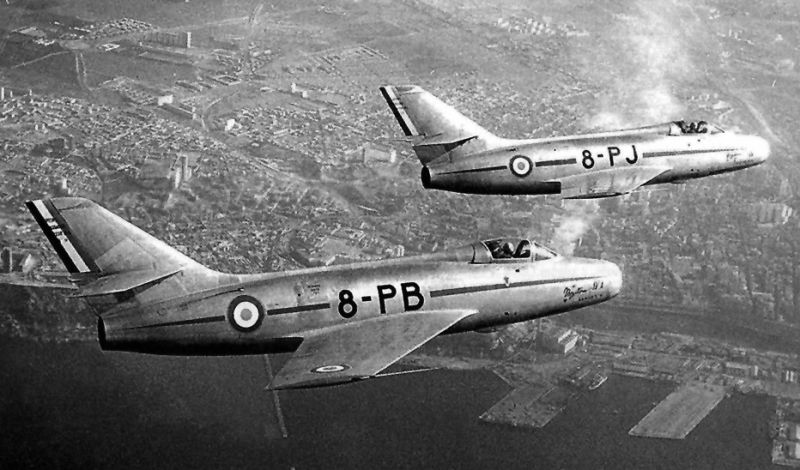Welcome to This Date in Aviation History, getting of you caught up on milestones, important historical events and people in aviation from February 29 through March 3.
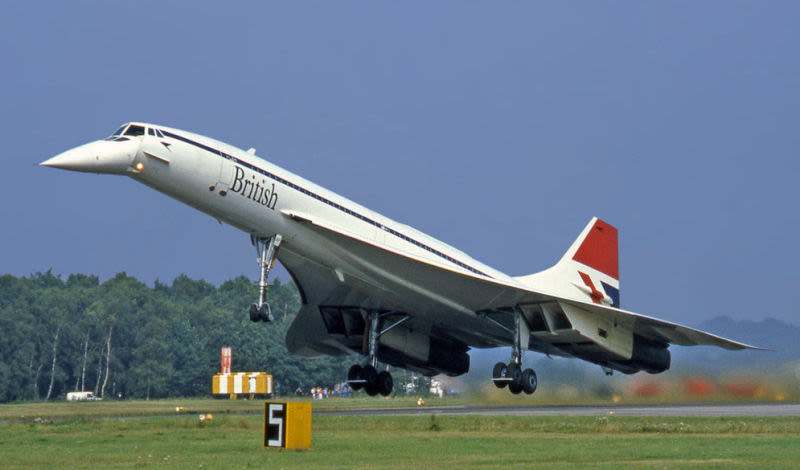
March 2, 1969 – The first flight of the Aérospatiale/British Aircraft Corporation Concorde. The evolution of the airplane has branched out in many directions, and the airplane has taken many forms, but perhaps one constant throughout its developmental history has been the quest for ever greater speed. In 1903, the Wright Brothers’ first flight covered the ground at a speed of 6.8 mph, but a mere 44 years later Chuck Yeager piloted the Bell X-1 past the speed of sound. In Yeager’s day, supersonic flight was mainly the purview of the world’s militaries. Nevertheless, aircraft designers were keen to see how supersonic technology might be applied to commercial aircraft, and the English and French each began working individually on their own solutions.
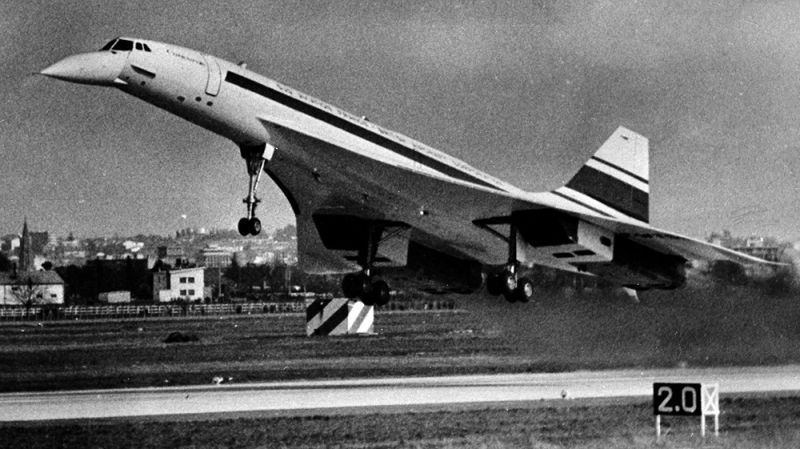
In the early 1950s, the Royal Aircraft Establishment in England formed the Supersonic Transport Aircraft Committee to study the concept of a supersonic airliner. After considerable research on various design possibilities, they settled on an ogee delta planform for the wing, with a slender fuselage to reduce drag. Their work culminated in the Bristol Type 223, an airliner that would have seated about 100 passengers with a top speed of Mach 2, though it never progressed beyond the design phase. Across the English Channel, the French were also investigating a supersonic airliner, and had come to many of the same design conclusions reached by the British. However, their concept for the Super-Caravelle, while similar in shape, was significantly smaller, and was envisioned more as a replacement for the Caravelle airliner and not for transatlantic flights.
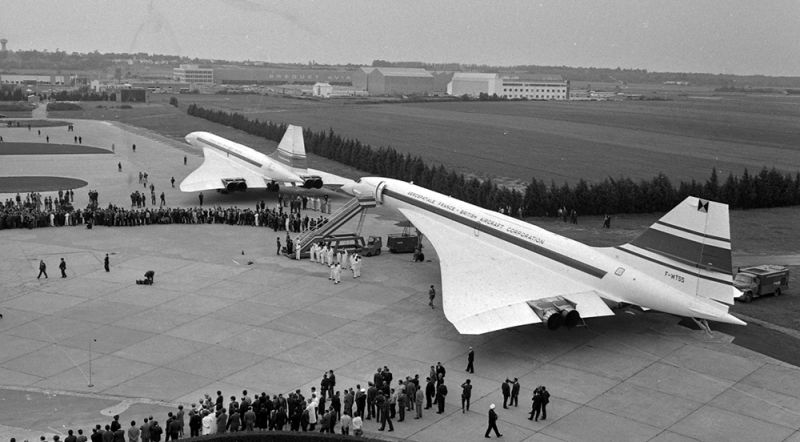
With both countries working towards much the same goal, it became clear that an international partnership would best serve their interests, and help compete against the US dominance in commercial airliner production, and Boeing had already begun initial investigation into building an SST of their own. In November 1963, the United Kingdom and France signed a treaty binding the two countries to work together on the project, and the name Concorde was chosen in honor of this landmark international agreement. Construction of two prototypes began in 1965, the first in France (001) and the second in England (002). The French Concorde flew first on March 2, 1969, followed a month later by the English Concorde on April 9, 1969. Ultimately, 20 Concordes were built, six of which were prototypes and used for development and testing. Air France and British Airways each received seven aircraft.
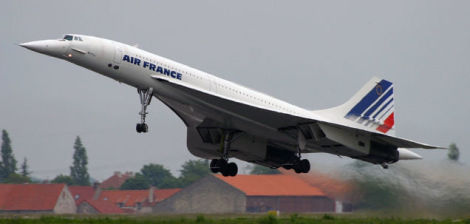
Concorde entered service with British Airways on January 21, 1976 flying between London and Bahrain while Air France pioneered supersonic passenger service between Paris and Rio de Janeiro. British Airways flew daily between New York and London, and weekly flights to Barbados during the holiday season. They also served Dallas, Miami, Singapore, Toronto, and Washington, DC. Air France flew between Paris and New York five times a week, as well as scheduled flights to Caracas, Mexico, Rio, and Washington, DC. Concorde’s four Rolls Royce/Snecma Olympus 593 afterburning turbojets provided a maximum cruising speed of Mach 2.04, and an average flying time of three-and-a-half hours cut the time between transatlantic destinations in half when compared to traditional airliners. Concorde set a number of records, including the fastest eastward transatlantic flight when an SST departed on February 7, 1996 from New York’s JFK International and touched down at London Heathrow in just 2 hours, 52 minutes, 59 seconds. Concorde also set records for circumnavigation of the globe in both directions, though with numerous refueling stops along the way.
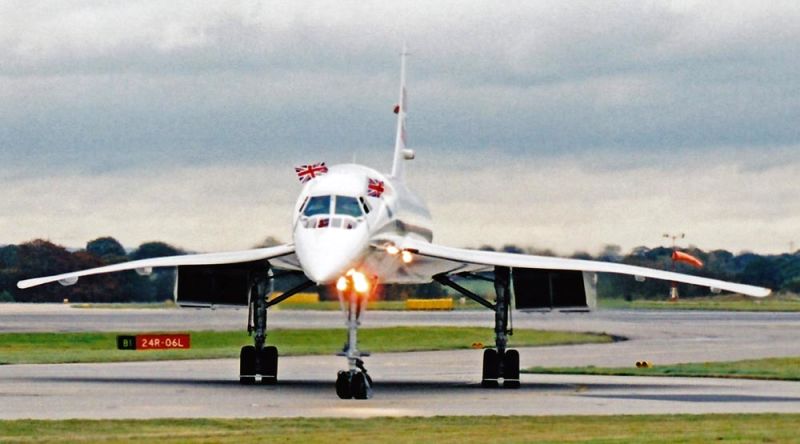
The 14 operational Concordes enjoyed an exceptional safety record, though there were two non-fatal accidents and a spate of tire failures throughout their service history. The only loss of a Concorde occurred on July 25, 2000 when Air France Flight 4590 (F-BTSC) crashed shortly after takeoff from Charles de Gaulle airport when debris on the runway punctured a tire and ruptured the fuel tank. The burning airliner crashed into a hotel, killing all 109 passengers and crew along with four persons on the ground. Following the crash, all Concordes were grounded until safety improvements could be made, and service resumed in November 2001. Though the crash didn’t lead directly to the end of Concorde flights, its service days were numbered. The accident led to a drop in bookings for flights on Concorde at a time when all passenger numbers were down following the September 11 terrorist attacks. Concorde’s high fuel costs and small passenger capacity meant that the SST had never been a money-maker for the airlines and, with rising maintenance costs also figuring into the balance sheet, Air France and British Airways made the decision to retire Concorde in 2003. Twelve of the original 14 operational aircraft were dispersed to display sites in Europe, the US, and Barbados. Of the remaining two, one aircraft was lost in the 2000 crash, and the other was used for spare parts and scrapped in 1994.
Short Takeoff
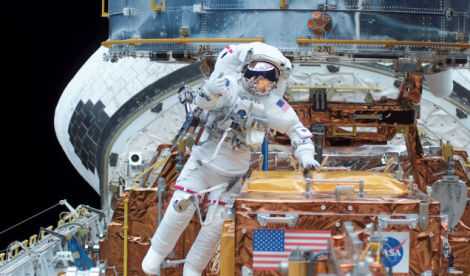
March 1, 2002 – The launch of the Space Shuttle Columbia on STS-109, the last successful mission of Columbia. STS-109 marked the 27th flight of Columbia and the 108th mission of the Space Shuttle program. The flight was the first for Columbia after undergoing a 2.5 year modification program, and the mission was highlighted by the installation of a new camera, new solar arrays, and a new power unit on the Hubble Space Telescope (HST), the third of five Hubble servicing missions. STS-109 was also the final completed mission of Columbia. The orbiter was lost on February 1, 2003 during STS-107 when it broke apart while reentering Earth’s atmosphere after a piece of insulation foam damaged the wing during launch. Columbia burned up in the atmosphere with the loss of all seven astronauts.
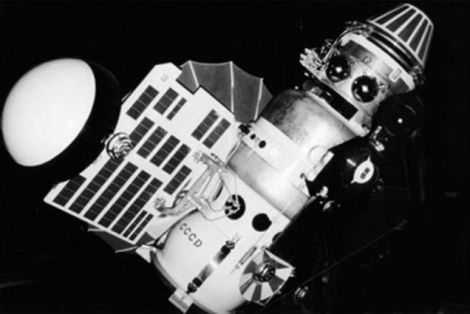
March 1, 1966 – The Soviet space probe Venera 3 crash lands on Venus. The Soviet Venera program was a series of space probes launched between 1961 and 1984 to study the planet Venus. Venera 3 (the lander is the small, cone-shaped portion at the top of the spacecraft) was launched from Baikonur, Kazakhstan on November 16, 1965, and its mission was to land on the surface of our solar system’s second planet to study magnetic fields, cosmic rays, solar plasma and micrometeorites. Unfortunately, radio contact with the probe was lost during landing, and the spacecraft most likely crashed. Nevertheless, the probe has the distinction of being the first manmade spacecraft to impact the surface of another planet.
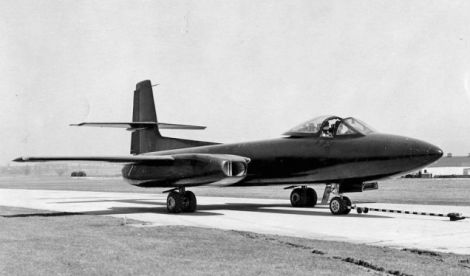
March 1, 1948 – The first flight of the Curtiss-Wright XF-87 Blackhawk, a prototype all-weather fighter/interceptor developed by the Curtiss-Wright Corporation as a successor to the Northrop P-61 Black Widow. Curtiss-Wright initially proposed a twin-engine jet fighter, but the Air Force rejected their proposal because the engines weren’t powerful enough for the 32,000-pound airframe. So Curtiss-Wright altered their plans to meet the new Army requirement and added two more engines. Flight tests showed the Blackhawk to be an acceptable aircraft, though the first engines were underpowered, and the Blackhawk suffered from buffeting that was never entirely solved. Following an upgrade to more powerful General Electric J47 turbojets, the XF-87 showed promise, and the USAAF placed orders for 57 aircraft, but the Blackhawk ultimately lost out to the Northrop F-89 Scorpion. Only two prototypes were built, and the loss of the Army Air Forces contract led to the demise of Curtiss-Wright.
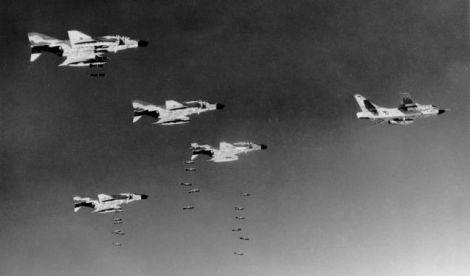
March 2, 1965 – The start of Operation Rolling Thunder, a sustained campaign of aerial bombardment against North Vietnam that lasted more than three years. US military planners hoped the bombings would boost South Vietnamese morale, stop the North Vietnamese government from its support of Communist rebels in the south, destroy the transportation system of North Vietnam, and prevent the flow of war materiel into the south. American and South Vietnamese aircraft faced dogged and sophisticated resistance to the attacks, and over 900 aircraft were lost. The US Air Force suffered the death of 255 pilots with 222 captured, while the US Navy and Marine Corps casualties totaled 454 pilots killed, captured or missing. Despite 864,000 tons of bombs dropped over the course of 300,000 sorties, Rolling Thunder was ultimately unsuccessful.
March 2, 1955 – The first flight of the Dassault Super Mystère, a French-built fighter-bomber and the first Western European supersonic aircraft to enter mass production. The Super Mystère is the ultimate evolution of the Dassault Ouragan, which had in turn been developed into the Mystère I/II/III and Mystère IV. The Super Mystère was the first in the series to achieve supersonic speeds in level flight. Following its introduction in 1957, the Super Mystère served with the French Armée de l’Air until its retirement in 1977. It was also exported to Honduras and Israel, where it saw action in the Six Day War and the Yom Kippur War. A total of 180 aircraft were built.
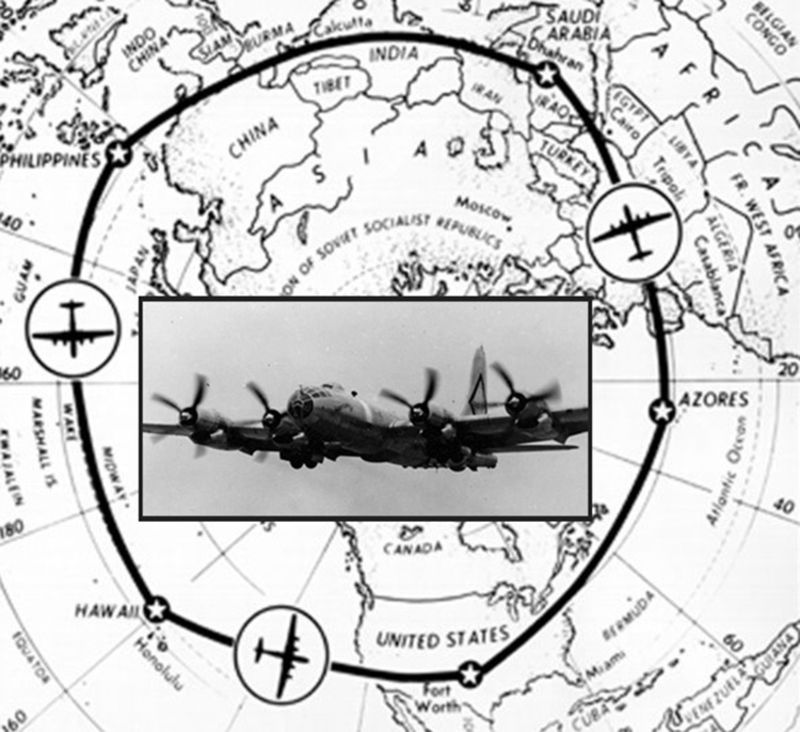
March 2, 1949 – The crew of Lucky Lady II completes the first non-stop circumnavigation of the globe. Lucky Lady II was a US Air Force Boeing B-50 Superfortress belonging to the 43rd Bombardment Group. At the time of its round-the-world flight, the strategic bomber still had all of its defensive armament, though the bomb bay had been fitted with an additional fuel tank. Lucky Lady II departed from Carswell AFB in Texas on February 26 on an easterly route and was refueled by aerial tankers four times during a 94-hour flight that covered 23,452 miles. Two crews took turns flying six-hour shifts. For their roles in the mission, each member of the crew was awarded the Distinguished Flying Cross.

March 3, 2005 – Steve Fossett completes the first nonstop solo circumnavigation of the Earth. Millionaire adventurer Steve Fossett took off from Salina, Kansas on February 28, 2005 in the Virgin Atlantic GlobalFlyer, an aircraft designed by Burt Rutan and built by Rutan’s company Scaled Composites. The twin-boom aircraft was built from carbon fiber reinforced plastic and powered by a single Williams FJ44 turbofan engine. Fossett flew eastward from Kansas at an average speed of 342.2 mph and returned to his starting point slightly more than 67 hours and 22,936 miles later to claim the absolute record for “speed around the world, nonstop and non-refueled.” The following year, Fossett piloted the GlobalFlyer 25,766 miles nonstop to set the world’s record for the greatest unrefueled distance ever traveled in an aircraft.

March 3, 1974 – The crash of Turkish Airlines Flight 981. Turkish Airlines Flight 981 was regularly scheduled McDonnell Douglas DC-10 (TC-JAV) service from Istanbul to London Heathrow that crashed when an improperly closed cargo hatch blew open at approximately 23,000 feet. When the door broke free, it caused an explosive decompression of the cabin and severed the control cables to the airliner’s tail and number two engine. The airliner crashed into the Ermenonville Forest in France, killing all 346 passengers and crew and making it the world’s deadliest aviation crash to date. Following a similar door failure two years before on an American Airlines DC-10 that landed safely, it was discovered that flaws in the design of the door could make it appear that the door was closed properly when in fact it wasn’t. Insurance company investigators also discovered that ground crew personnel in Turkey had ground locking pins down in an effort to get the door to close. After settling in court with the victims of the crash, McDonnell Douglas completely redesigned the cargo door, and the Federal Aviation Administration mandated that similar changes be made to outward-opening cargo doors on other large airliners.
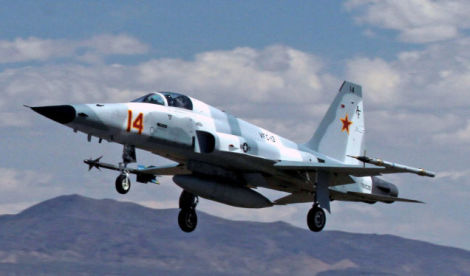
March 3, 1969 – The US Navy establishes the Fighter Weapons School at NAS Miramar, popularly known as TOPGUN. In 1968, the US Navy published the Ault Report, a review of Navy air-to-air missile system capabilities from 1965-1968, a period when US pilots suffered high losses during the Rolling Thunder campaign. Rather than place the blame for American aircraft losses entirely on early air-to-air missiles or missile systems, the Ault report recommended that an Advanced Fighter Weapons School be created to re-educate pilots in air combat maneuvering (ACM, or dogfighting), skills that had languished after the US started to rely solely on guided missiles. Select Naval Aviators and flight officers are sent to train at Topgun, then return to their operational units to share what they learned. In 1996, Topgun was merged into the Naval Strike and Air Warfare Center at NAS Fallon in Nevada.
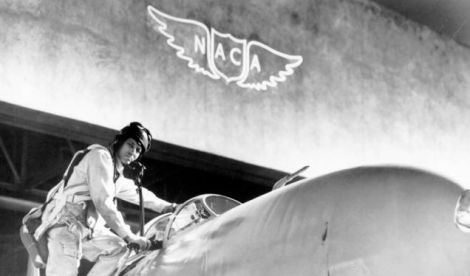
March 3, 1915 – The National Advisory Committee for Aeronautics is created to promote the technological development of aviation in the United States. NACA was at the forefront of some of the most important advances in aircraft design, such as the NACA cowling, which improved aerodynamics of radial engines and increased fuel efficiency, the NACA duct, which was an aerodynamic air intake used on jet aircraft, and the NACA airfoil, which maximized air pressure both above and below the wing. NACA took the lead in the development of advanced jet aircraft in the period immediately following WWII, and was responsible for many of the significant advances made in speed and altitude. Orville Wright served on the board for 28 years. With the beginning of the American space program, NACA was dissolved and its assets were transferred to the fledgling National Aeronautics and Space Administration (NASA) in 1958.
Connecting Flights
If you enjoy these Aviation History posts, please let me know in the comments. You can find more posts about aviation history, aviators, and aviation oddities at Wingspan.
